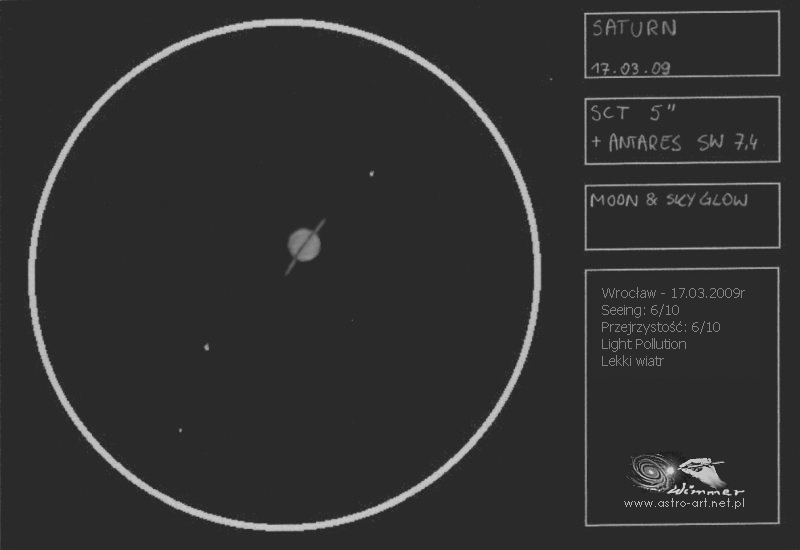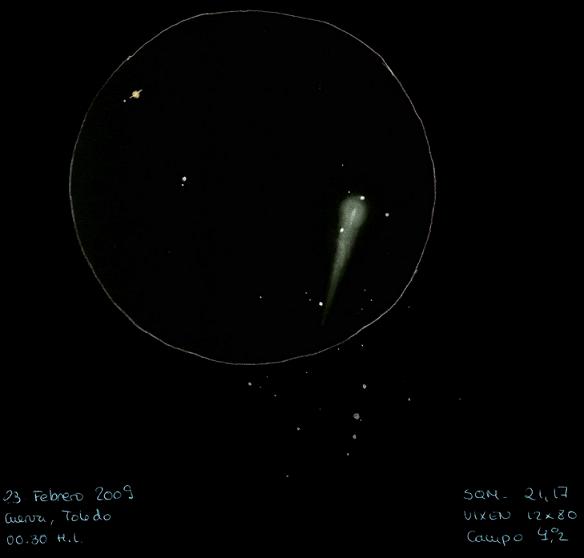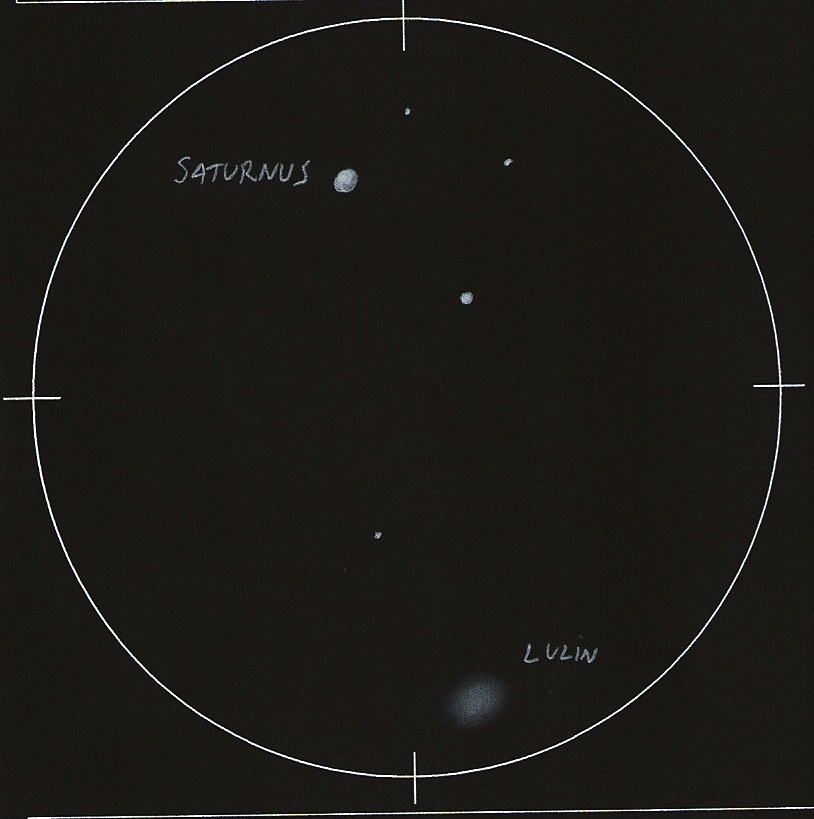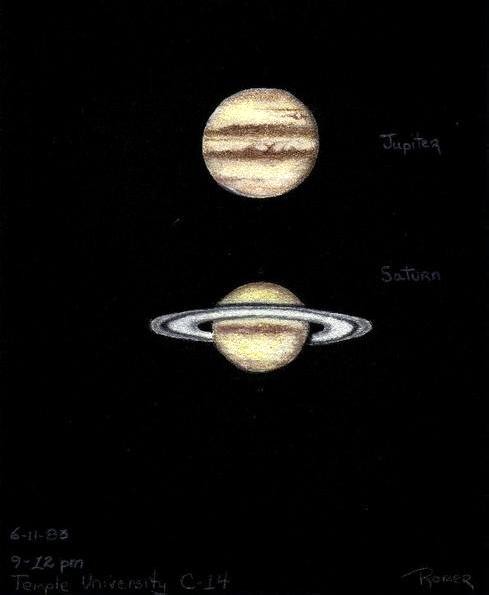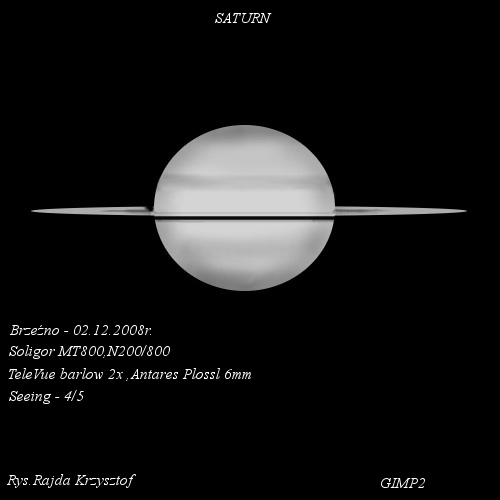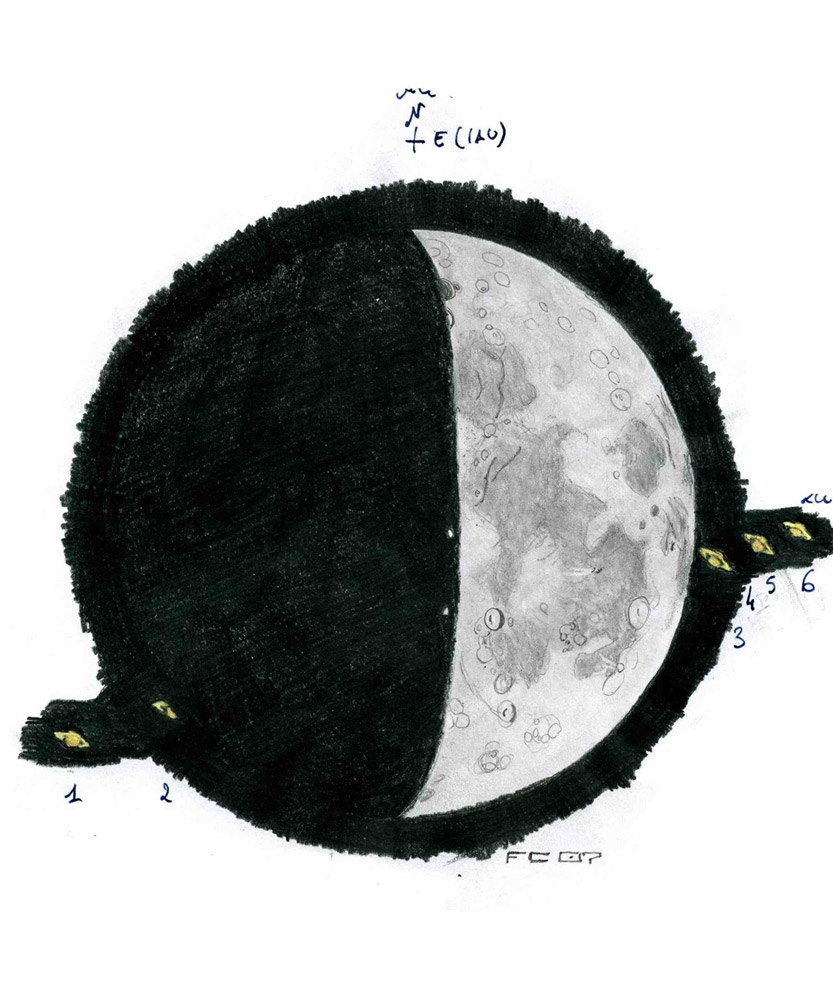
Saturn occultation by the Moon
Sketch and Details by Fred Corno
Please find attached a drawing of the Saturn occultation by the Moon occurred on the 22nd of May 2007 from approx. 19.23 through 20.34 UT.
The occultation was visible from Europe, and I recorded the event in a drawing made at the eyepiece of my 5” apochromatic telescope.
Drawing was prepared in advance with a large disk representing lunar surface, where terminator position and main features were marked in graphite pencil.
During the event, I marked at 19.23 (point 1), 19.28 (2), 20.34 (3), 20.35 (4), 20.38 (5), 20.40 (6) the position of Saturn, drawing the shape of the planet.
Eventually, black for the unlit part of the moon and the sky surrounding it and the colors for the planet were added.
As Saturn was the most amazing feature of the event, unconsciously I drew it larger than its real size: nevertheless final effect of the sketch finely matches what remains in my memory of that wonderful night.
Best regards.
Fred


